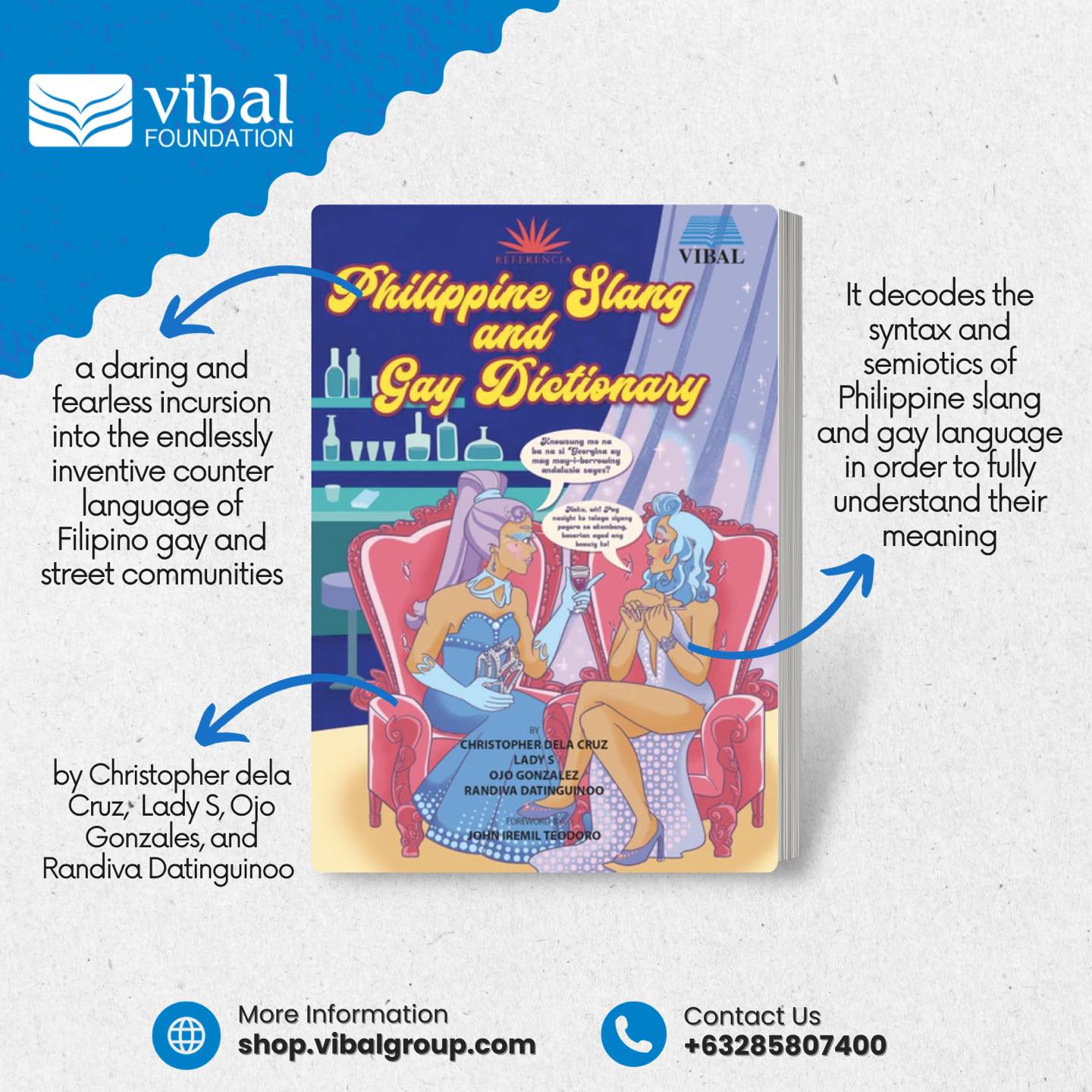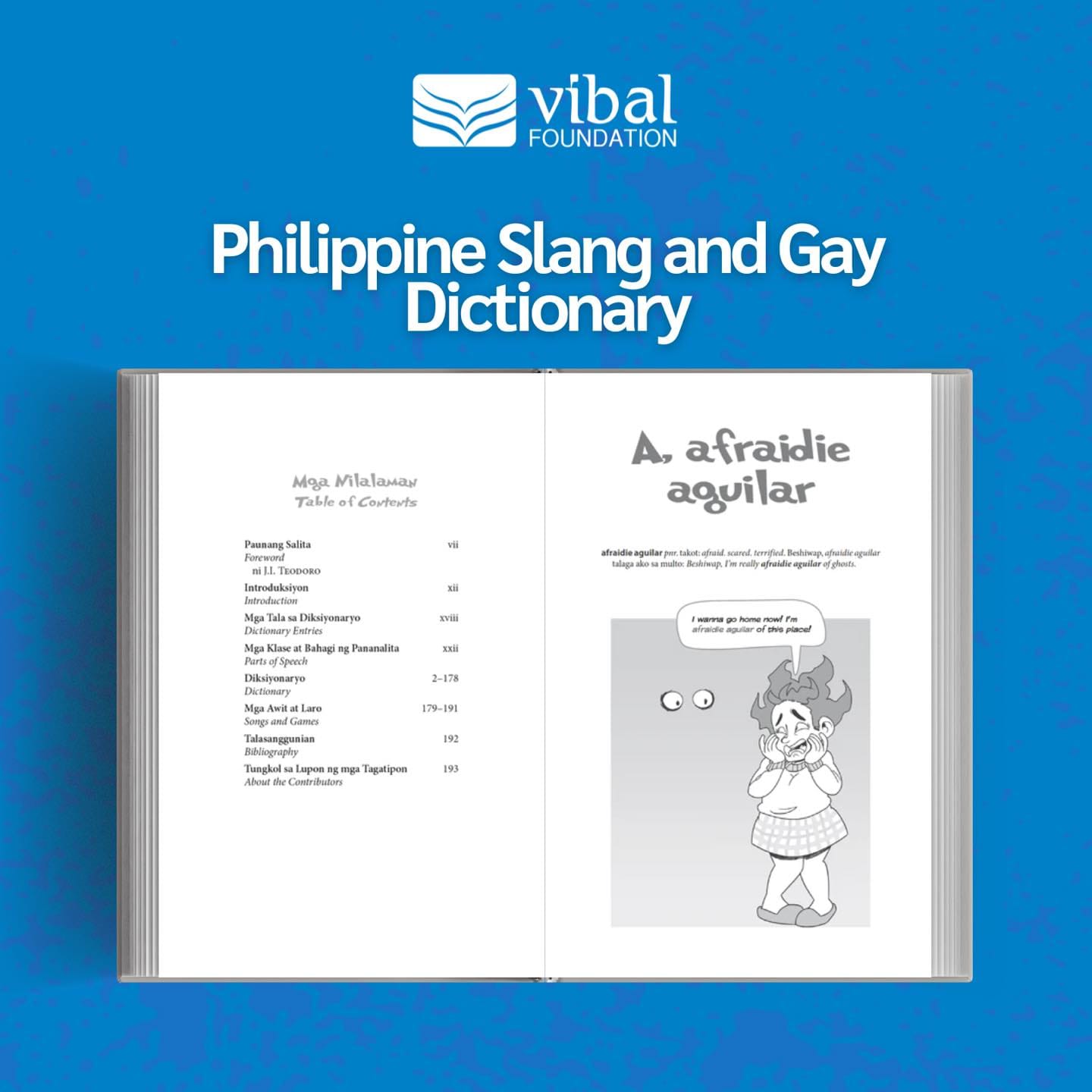Walang charot-charot 'to siz: This dictionary is your guide to the inventive language of Pinoy gay communities
"Nakakalurkey itech, neuro akesh, ay bongga pak na pak!"
Did you read the sentence above slowly, tongue-twisted, and wondered what that could mean? You are not alone, as even some LGBTQ+ individuals can have a hard time understanding such words even though they're popular in the queer community. Turns out, the sentence means: "I'm shocked, I'm blown away, and it's extravagant and great."
A Google search online might not provide a proper translation of such phrases but a new dictionary may just define any Pinoy beki slang you hear and see.
In case you missed it, Vibal Foundation launched the Philippine Slang and Gay Dictionary on Jan. 12 to explore the "endlessly inventive counter language of Filipino gay and street communities," offering a comprehensive introduction to the vibrant, influential, and historically significant terms still in use today.

Speaking to PhilSTAR L!fe, Sally Eugenio a.k.a. Lady S, one of the authors of the book, believed that "Beki Language" plays a vital role in developing the Filipino language and the country's history. Thus, a beki dictionary was born.
"We want the readers to learn that this language exists and must be accepted. They need to discover the beauty and the relevance of every word created by the extraordinary gay people," Eugenio told L!fe.
Understanding the syntax and semiotics of 'Beki language'
LGBTQ+ language in the Philippines remains relatively distinct, with its rapidly shifting linguistic code called "Swardspeak," influenced by Spanish and English loan words. This code mainly consists of lexical items but includes sound changes, as if you are deciphering a Da Vinci Code.
But for Eugenio, indulging themselves in the community makes them fully understand the language with the help of research and analysis of its syntax and semiotics.

"We also did many interviews, especially with the community of gays in parlors, barberyas, in the marketplace, schools, and with ordinary and not-so-ordinary human beings. We consulted different dictionaries, verified facts and definitions, and interviews with the right group of people—from linguistics to scholars to students, to the old and new version of Bekis."
Through this, they decided on what to include or not in the over 2,000-word list, not to mention their judgment as certified "beks by heart."
'Gay Lingo is beautiful'
Believing that gay lingo is beautiful, funny, daring, expressive, and mostly makes everyone happy, Eugenio and their team were amazed at how the public received the book, including their straight allies.
"Somehow, this book represents and recognizes the community and the language that has evolved from it," Eugenio shared with L!fe.
The book also features scholarly talks on the study of slang and homosexual language, a comprehensive lexicon, vibrant pictures, and the origin of each phrase, as well as usage notes and sample sentences.
In addition to commonly-used slang, the dictionary also includes definitions of counter language—a dialectical form created in opposition to more formal or "official" languages—providing information about LGBT+ customs and culture, collectively contributed by author and Palanca awardee Christopher Dela Cruz, veteran columnist of Philippine Online Chronicles Lady S, language expert Ojo Gonzales, and drag queen Randiva Datinguinoo.
Although the book has a disclaimer for its use of explicit and sexual language that may offend some readers, Eugenio said, "It's 2024, and representation matters, and it gladdens our hearts to see the overwhelming excitement around this title."
Philippine Slang and Gay Dictionary is available for P610 on the Vibal online shop. (with reports from John Patrick Ranara)


